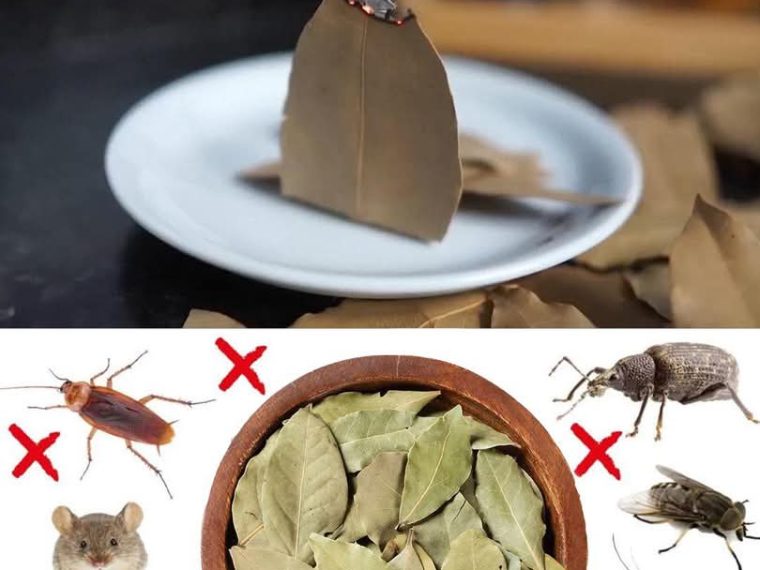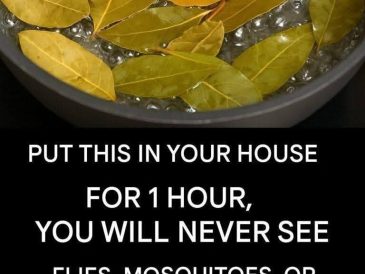Bay leaves are far more than a culinary spice used to enhance soups and stews. These aromatic leaves—harvested from the Laurus nobilis tree—have a long history not only in cuisine but also in traditional medicine. However, few people know that bay leaves can be powerful natural allies in the fight against household pests.
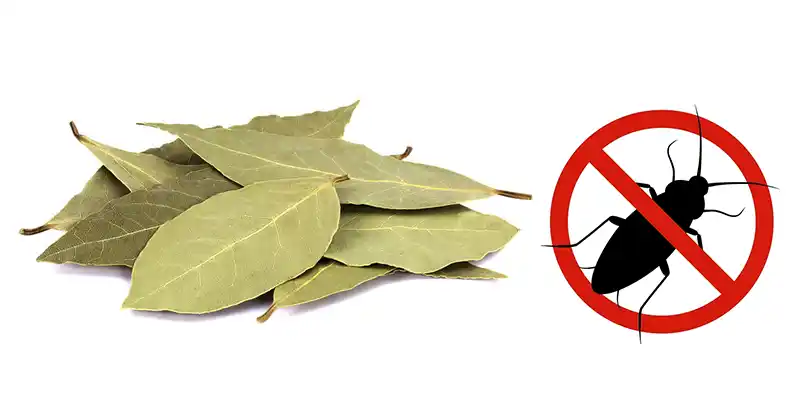
From insects to rodents, bay leaves offer a safe, non-toxic alternative to chemical pest repellents. Rich in essential oils like eugenol and linalool, their intense aroma interferes with the sensory systems of many common pests. Let’s explore how you can use bay leaves in practical and effective ways to keep your home pest-free.
1. Repelling Cockroaches with Bay Leaves
Cockroaches are notoriously hard to eliminate, but they hate the strong scent of bay leaves. You can use either whole or crushed dried bay leaves to repel them.
How to use:
- Place bay leaves in corners of your kitchen, under sinks, or behind appliances.
- Focus on areas where cockroach droppings or eggs have been spotted.
- Replace the leaves every few days for maximum potency.
The essential oils in the leaves disrupt their habits and keep them from establishing colonies in your home.
2. Keeping Mosquitoes at Bay
Mosquitoes don’t just leave itchy bites—they can spread serious diseases. Fortunately, compounds in bay leaves act as natural insect repellents.
How to make a bay leaf spray:
- Boil a handful of bay leaves in 2 cups of water for about 10–15 minutes.
- Let it cool and strain the liquid into a spray bottle.
- Spray it in mosquito-prone areas like windows, doorways, and patios.
For added protection, you can even lightly mist it onto clothing or exposed skin (do a patch test first to check for any irritation).
3. Driving Flies Away
Flies are a nuisance and a hygiene hazard. They’re drawn to food and garbage but are sensitive to strong odors, especially from herbs like bay leaves.
Two ways to use bay leaves against flies:
- Place dried bay leaves near windowsills, trash bins, and food prep areas.
- Burn a small bundle of dried bay leaves in a fireproof bowl (clay or metal) to release a smoke that naturally repels flies.
Repeat this fumigation every evening until the problem subsides.
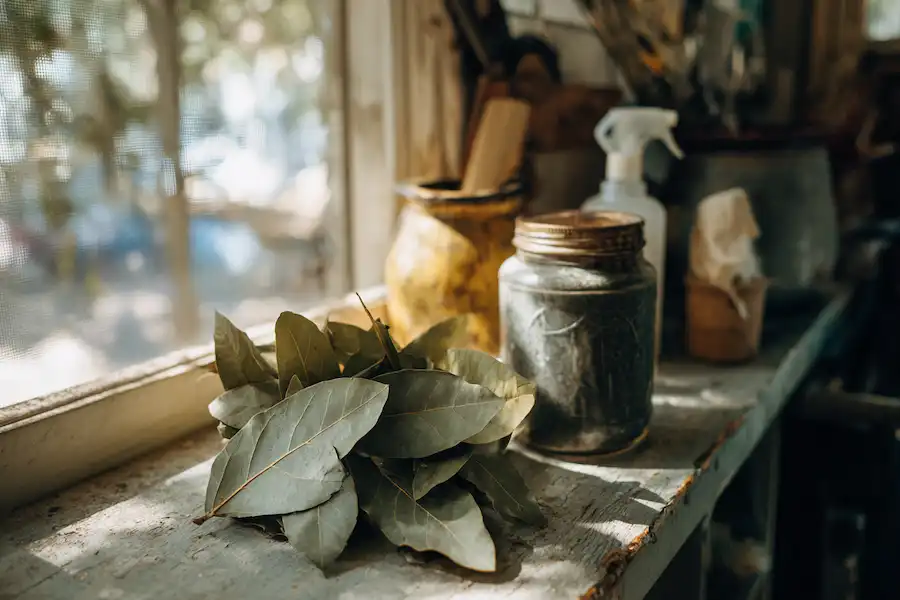
4. Disrupting Ant Trails
Ants rely heavily on pheromone trails to communicate and find food. Bay leaves interfere with these chemical trails, making it harder for ants to coordinate.
How to use:
- Place fresh or crushed dried bay leaves near entry points, window cracks, or visible ant trails.
- You can also scatter them inside pantry shelves or food cupboards.
This disruption prevents further ant infestation and is safe to use around children and pets.
5. Protecting Clothes from Moths
Certain types of moths can do significant damage to your wardrobe. Luckily, moths are repelled by the strong scent of bay leaves, especially the essential oils they release.
How to use:
- Place dried bay leaves in small fabric sachets and tuck them into drawers, wardrobes, and storage boxes.
- Replace them every few weeks to maintain effectiveness.
This is a great alternative to toxic mothballs and leaves your clothes smelling fresh.
6. Preventing Pantry Weevils
Weevils and other grain beetles often infest stored food such as rice, flour, and oats. The eugenol in bay leaves acts as both a repellent and a natural preservative.
How to use:
- Drop 1–2 bay leaves inside airtight containers of grains or flour.
- Line pantry shelves or food storage drawers with extra bay leaves to keep pests out.
This method not only deters insects but may help keep your food fresher for longer due to bay leaves’ mild antimicrobial properties.
7. Deterring Mice Naturally
Rodents, particularly mice, dislike the smell of bay leaves and tend to avoid areas where the leaves are present.
How to use:
- Crush several bay leaves and place them in corners, cabinets, or behind large furniture—especially where you suspect rodent activity.
- Replace every 2–3 days to ensure the scent stays strong and effective.
Bay leaves are a humane, non-toxic way to discourage mice without harming them or introducing poison into your home.
Additional Tips for Using Bay Leaves Against Pests
- Crushed vs. Whole: Crushing bay leaves releases more essential oils, making them more effective. Use whole leaves when placing them inside containers, and crushed leaves in open areas.
- Fresh vs. Dried: Both work well, but dried leaves are more convenient and last longer in storage.
- Use in Combination: For greater effectiveness, bay leaves can be used in combination with other natural pest repellents like cloves, lemon peels, or vinegar.
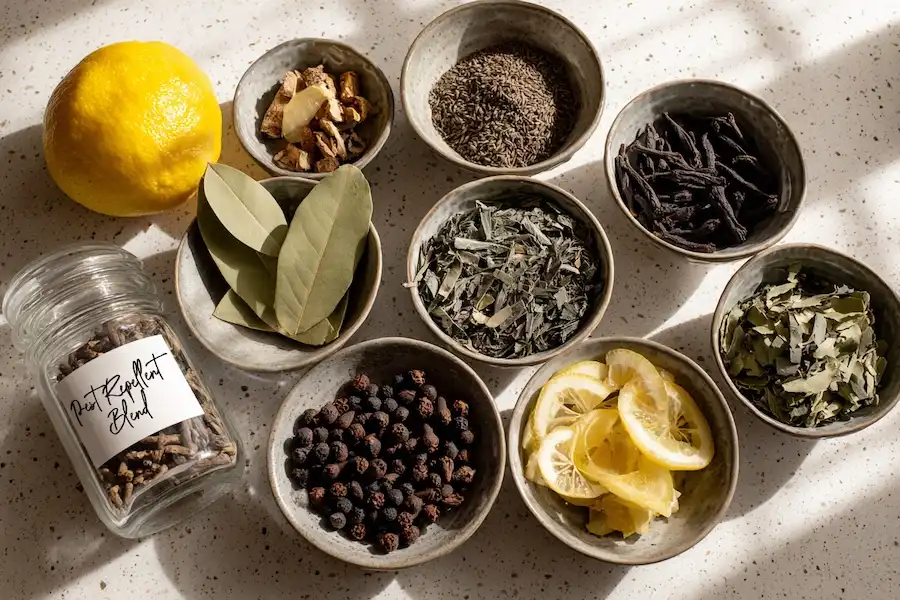
Bay leaves are more than just a spice for stews—they are a powerful, natural solution for keeping your home pest-free. Whether you’re dealing with cockroaches, mosquitoes, flies, ants, moths, pantry bugs, or even mice, this humble leaf offers a safe, affordable, and chemical-free alternative to conventional pest control.
So next time you reach for bay leaves in the kitchen, consider saving a few to protect your pantry, wardrobe, and home from unwanted invaders.
Disclaimer
Although bay leaves are generally safe, some people may experience mild skin irritation from direct contact. Always test sprays on a small area before applying to skin or furniture. This article is intended for informational purposes only and should not replace professional pest control in cases of severe infestation.
Inspired by this? Share the article with your friends!

